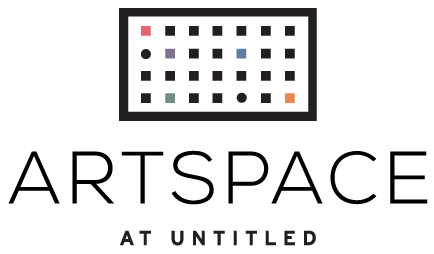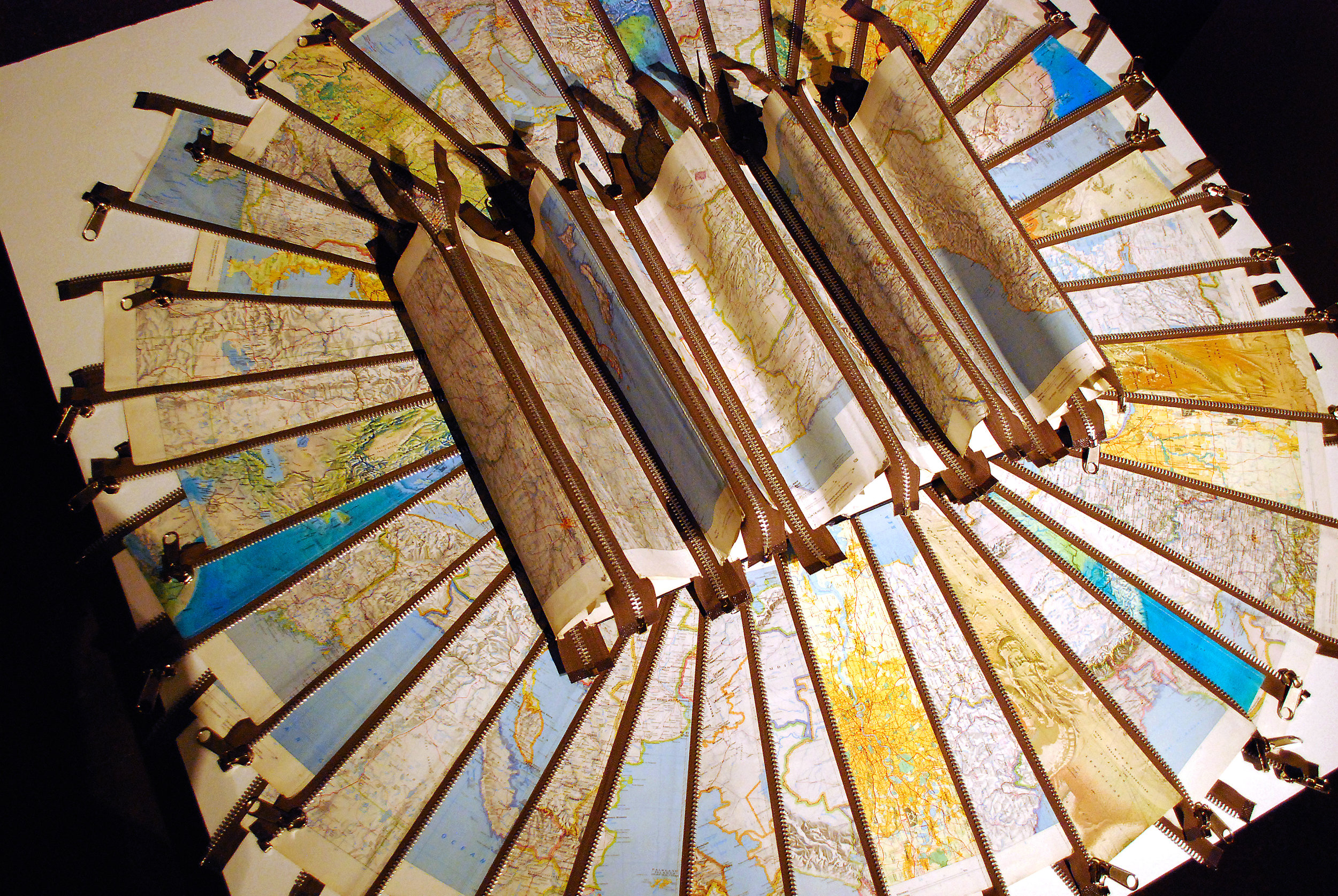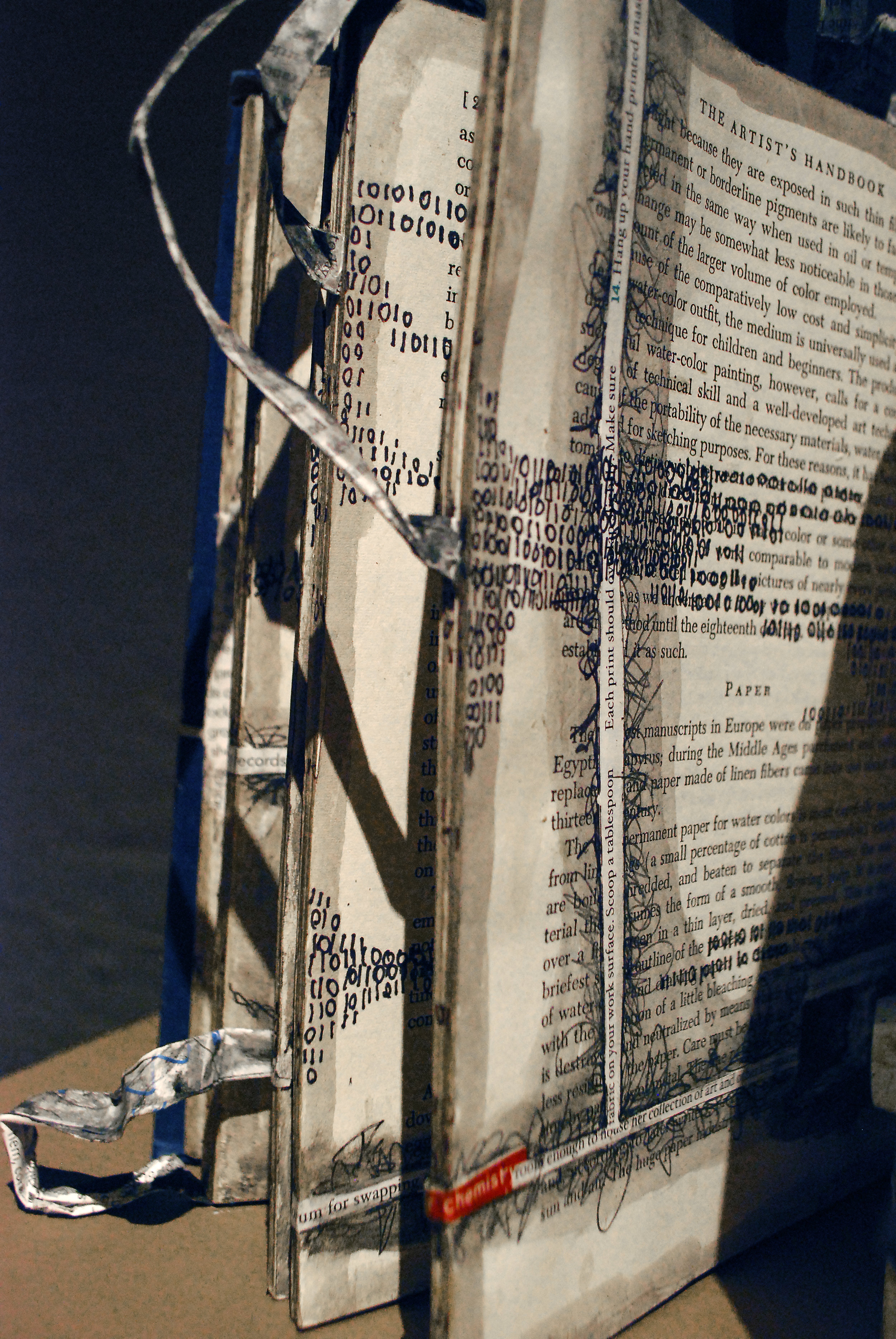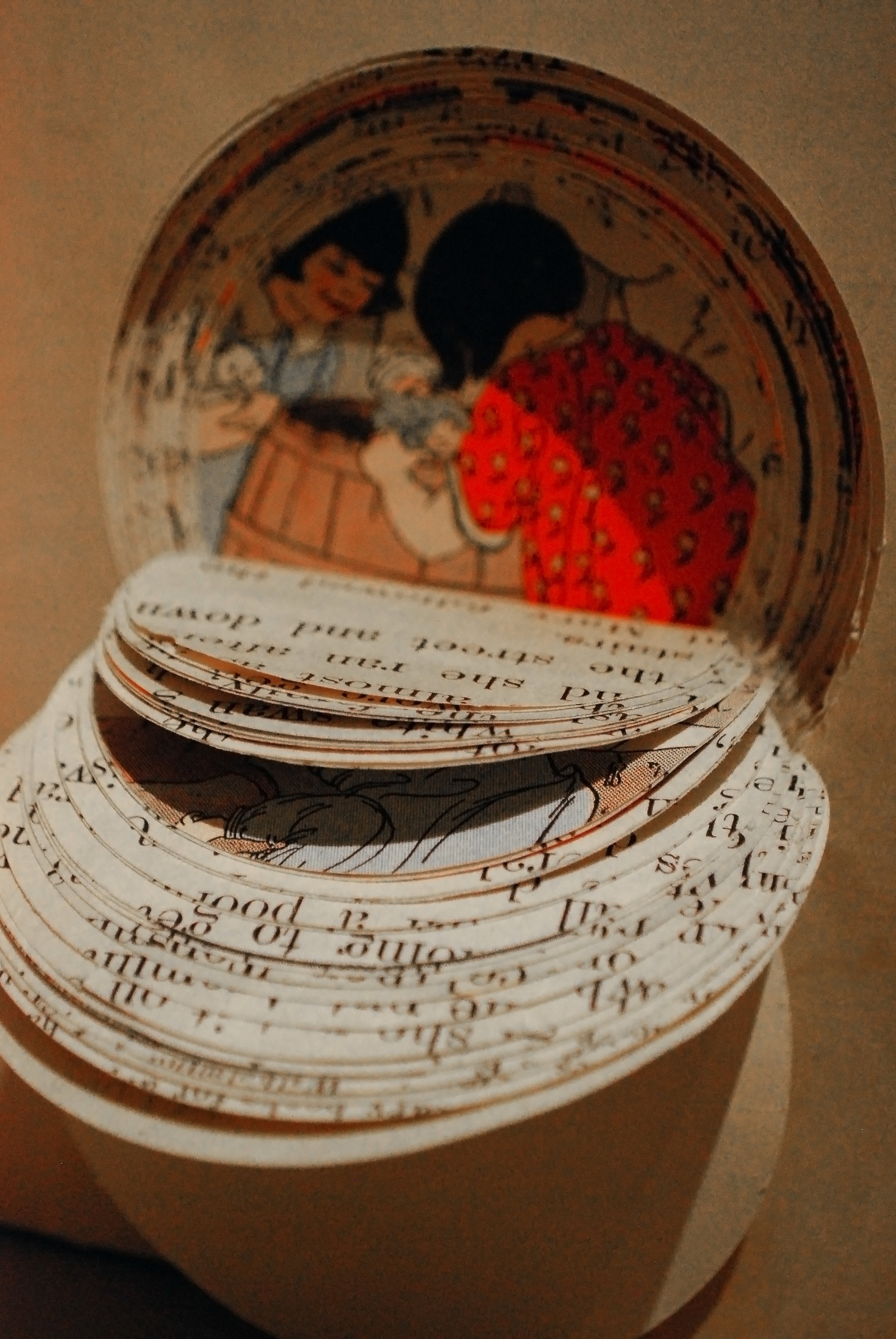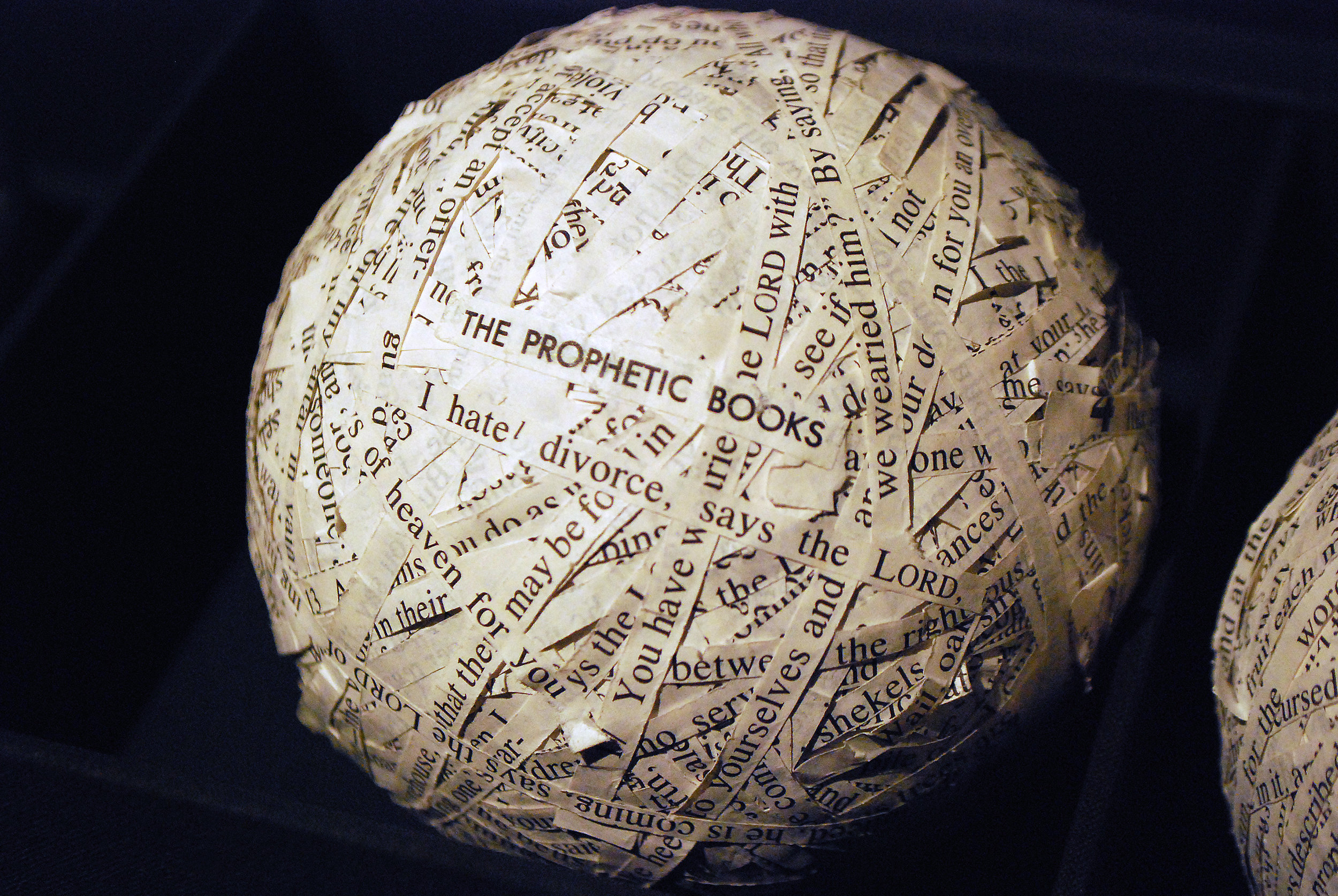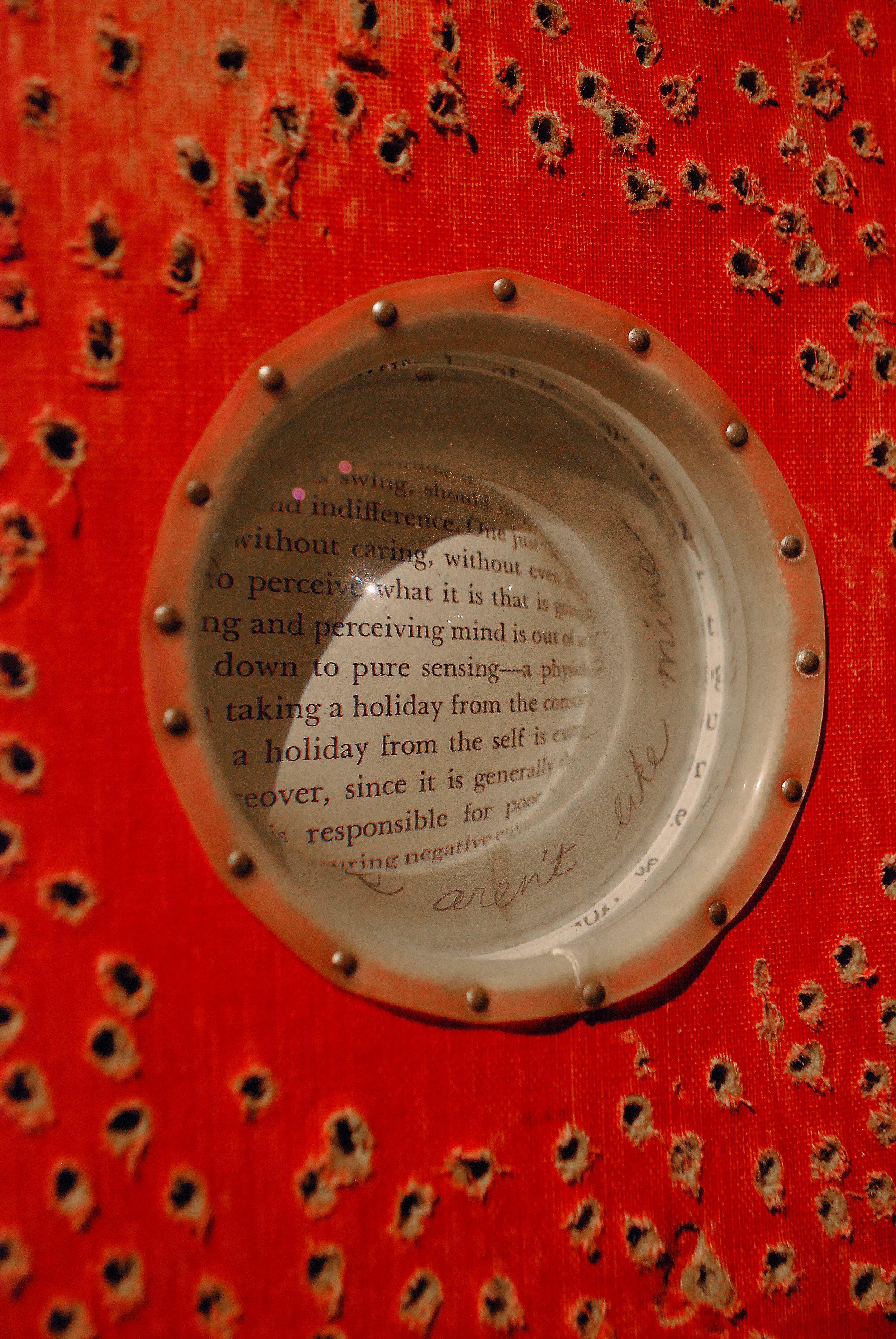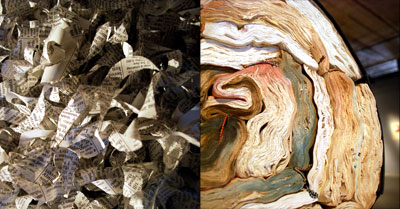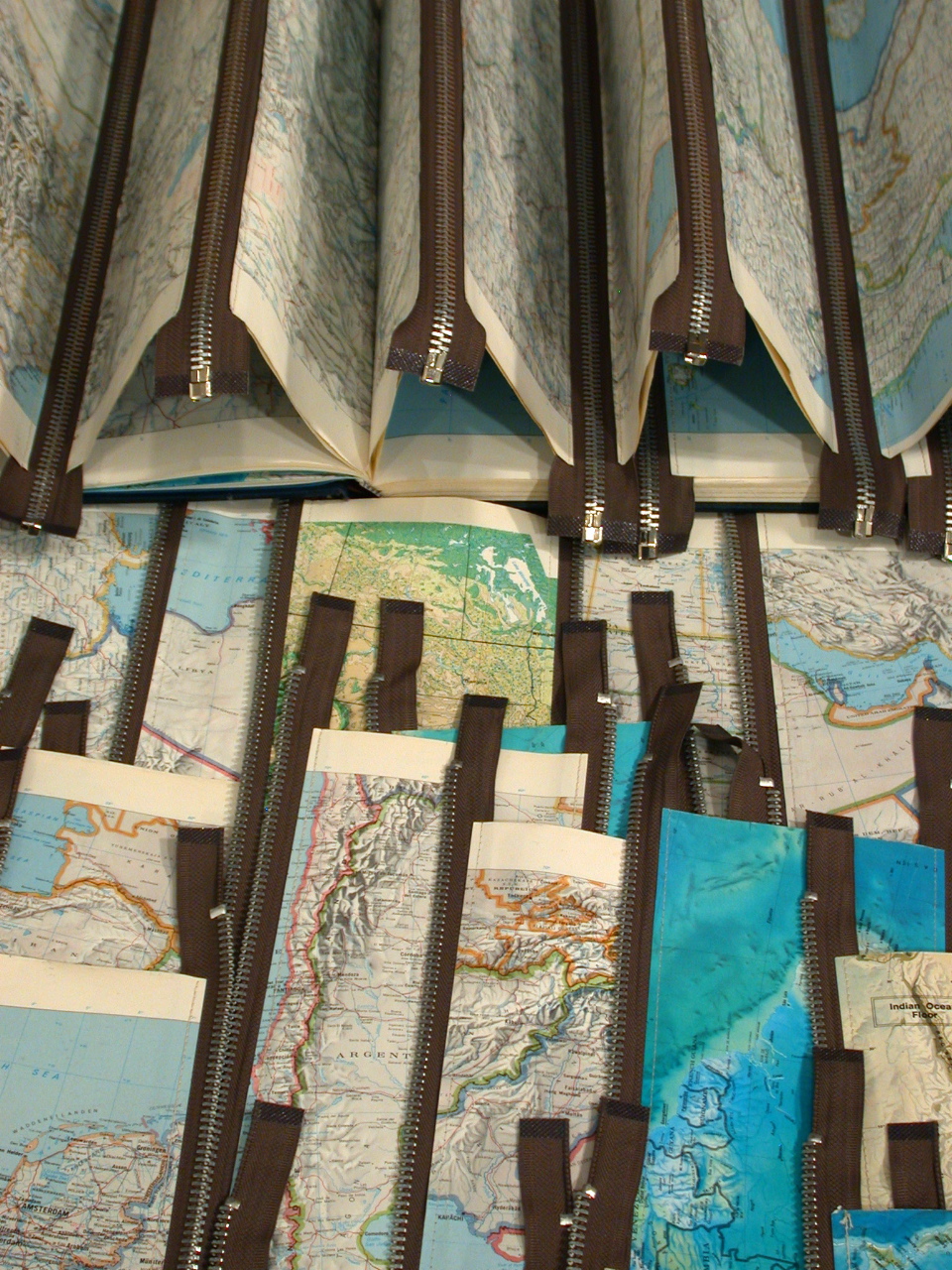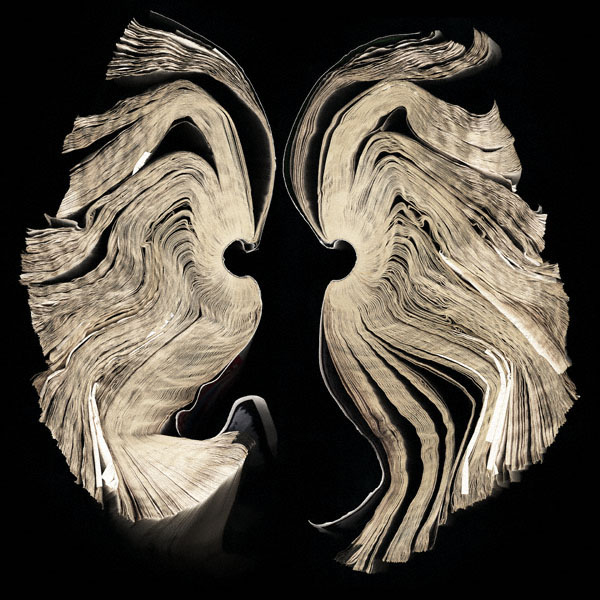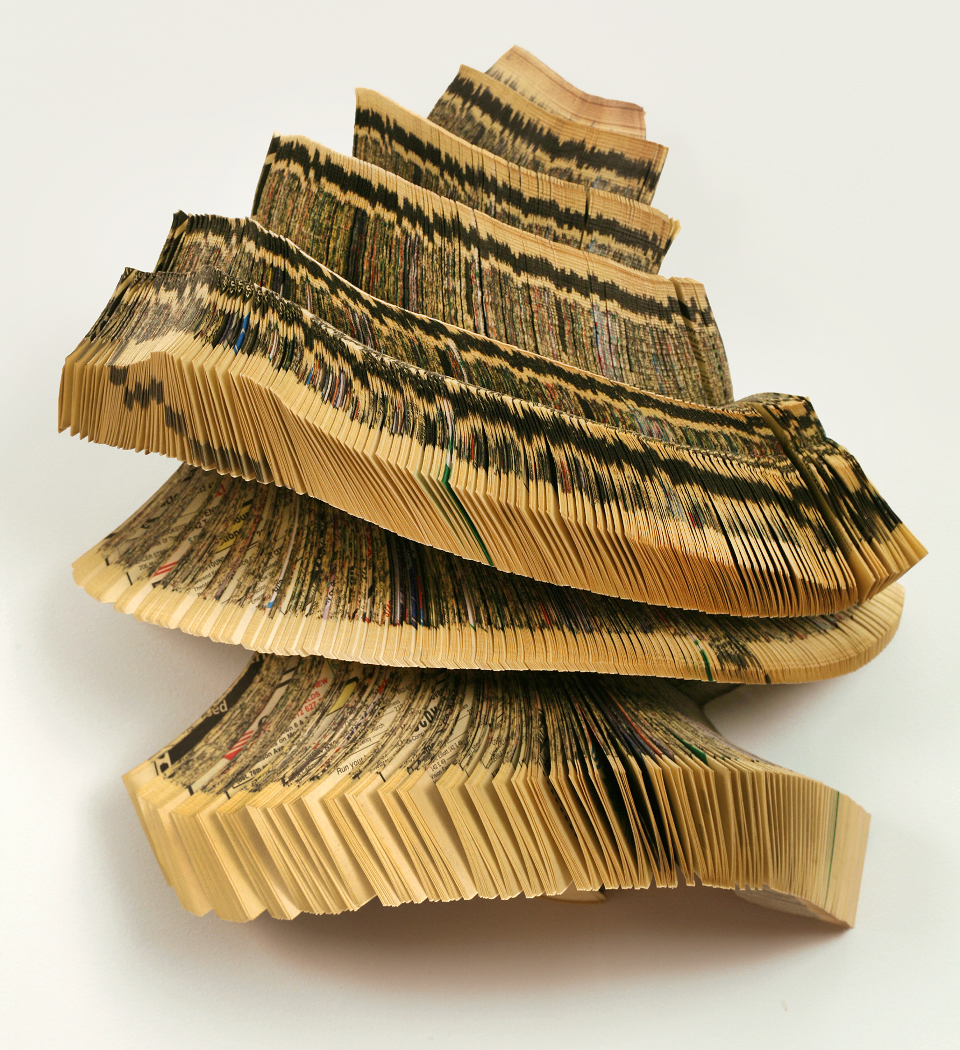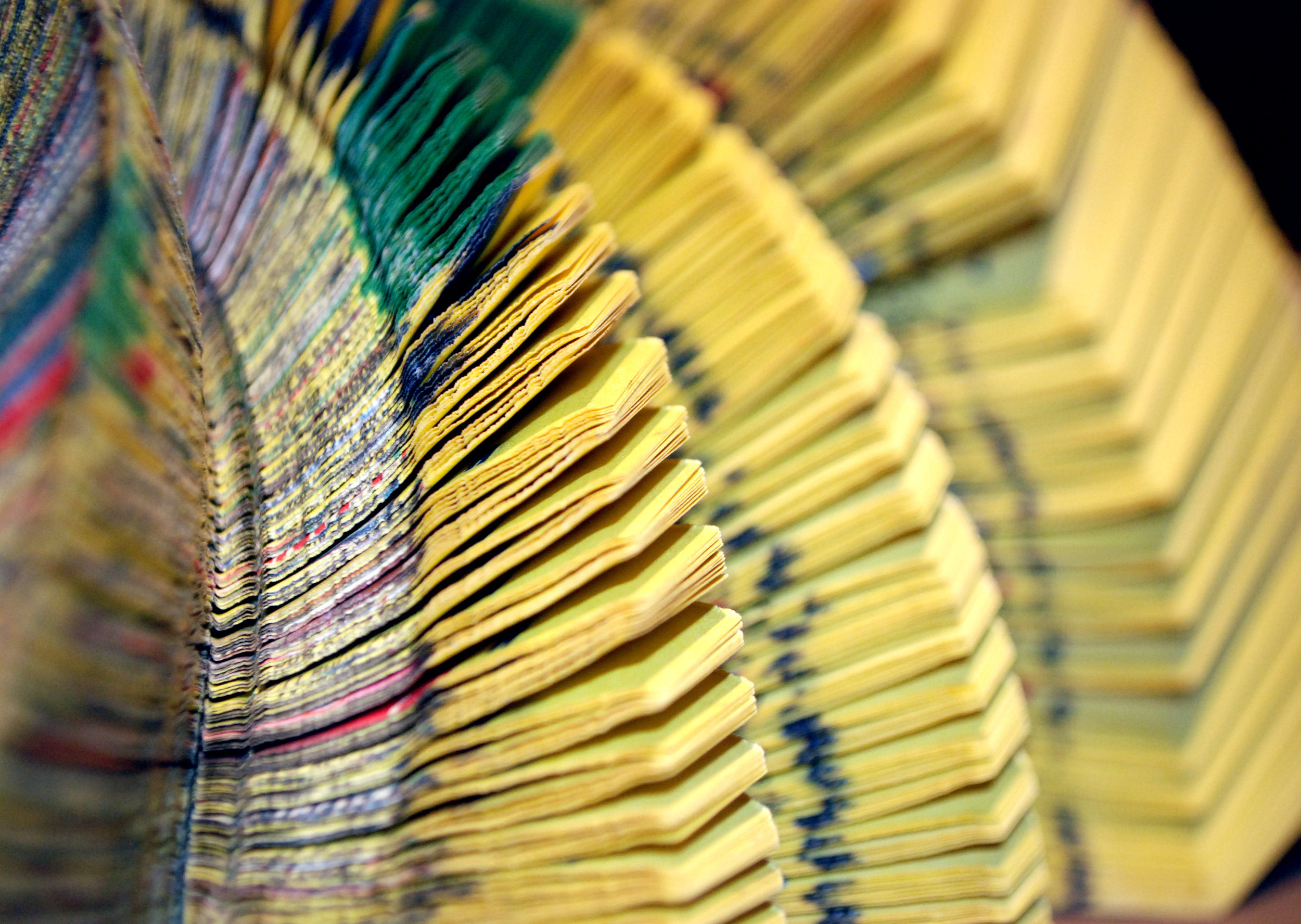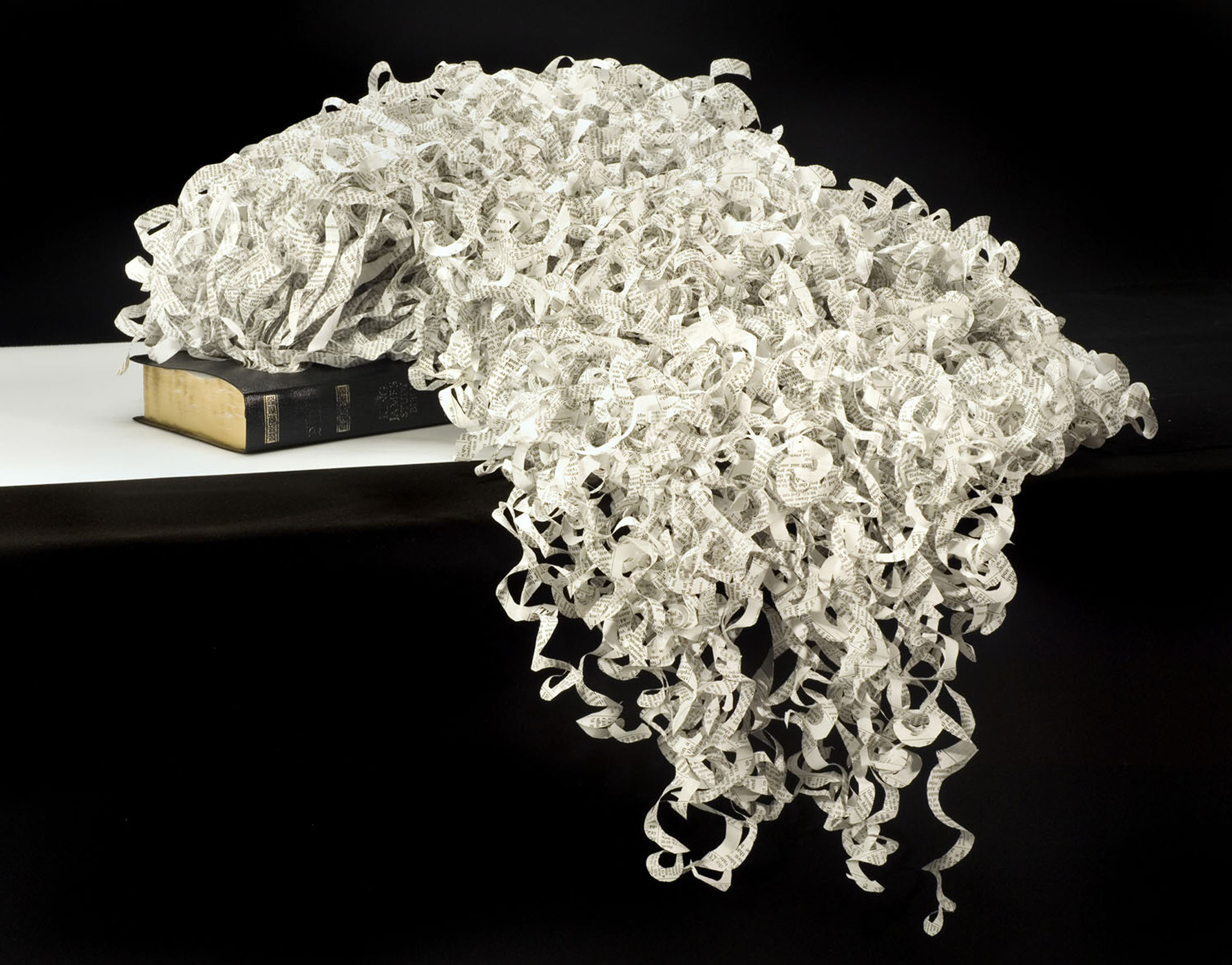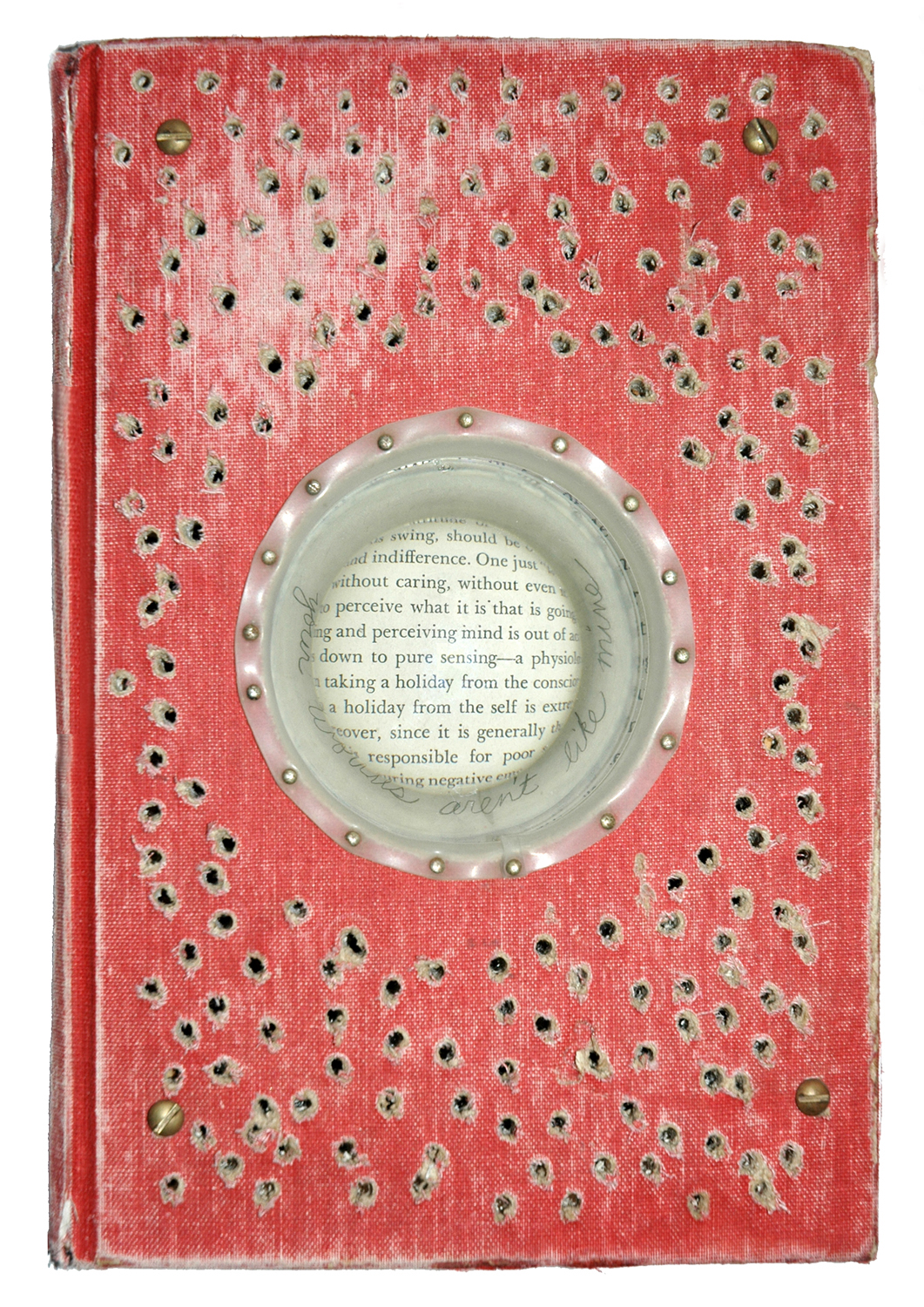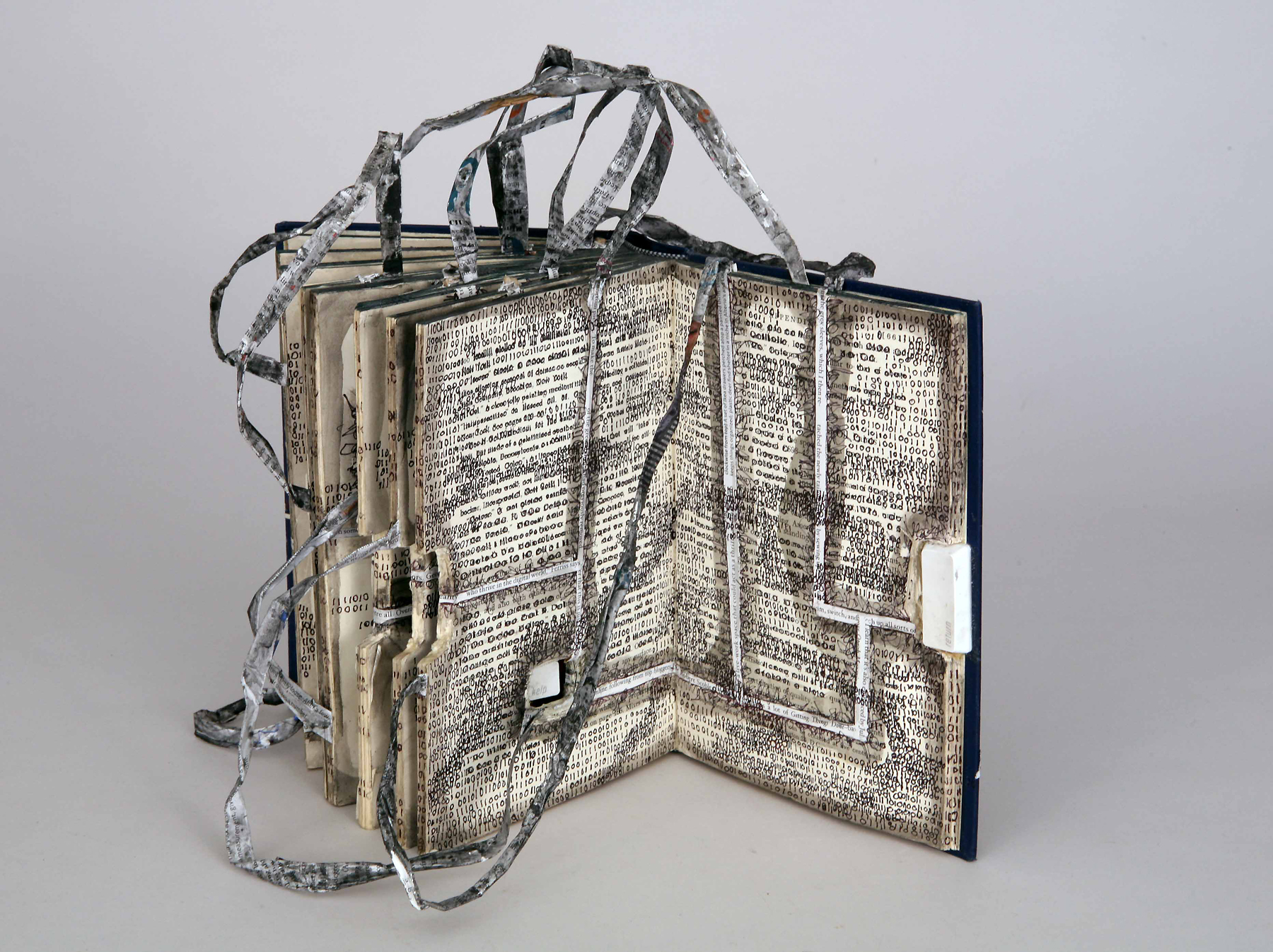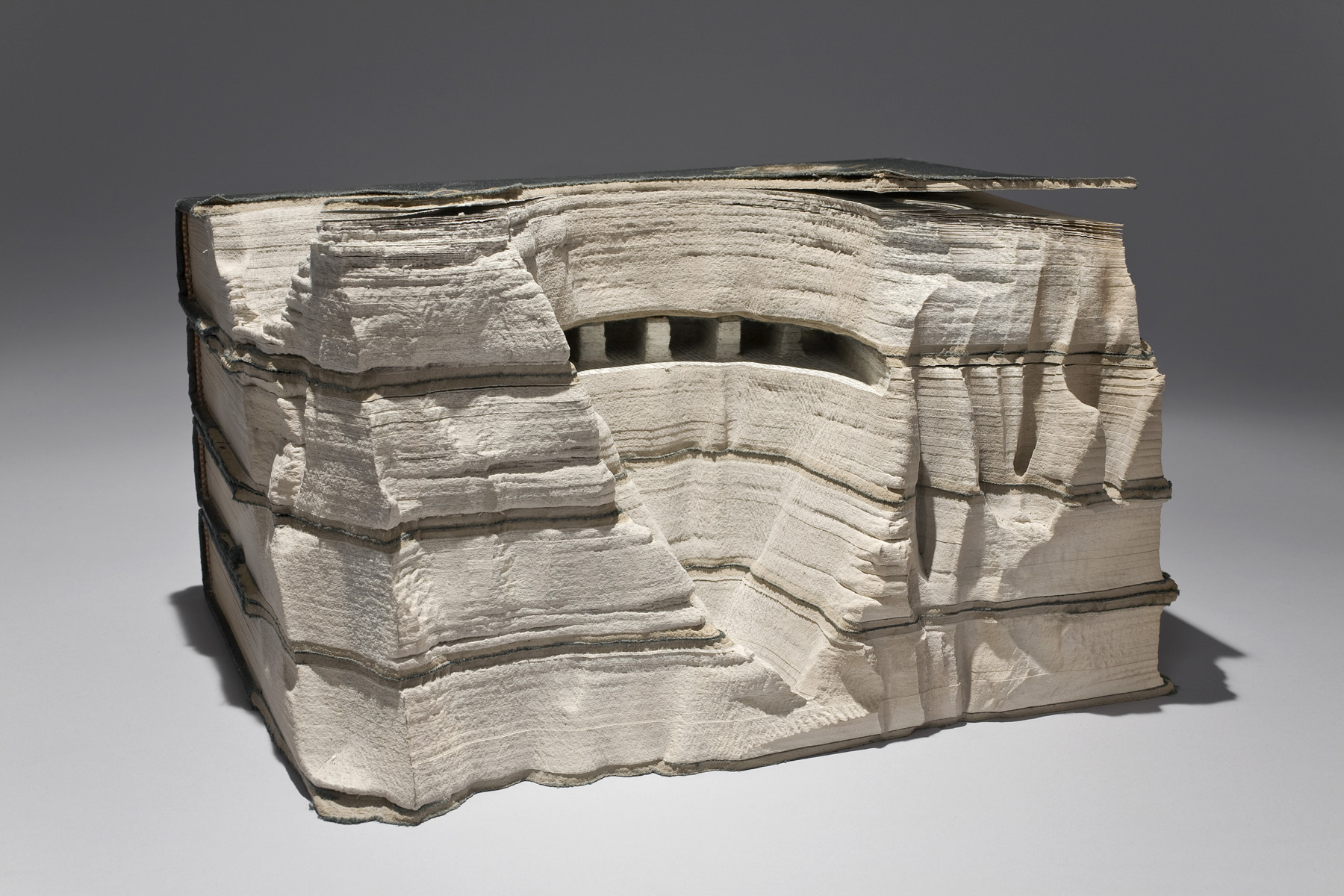Altered Books
July 9 - October 9, 2010
Altered Books featured book art by artists from across the United States and Canada. Complimenting the exhibit was On Reading: Selections from the PSA Collection featuring twenty-one photographic prints portraying humanity's love affair with books.Untitled's Altered Books exhibition focused on the book as object in a primarily sculptural sense. Artists utilize books as raw material, either independent of content or supporting it. In these altered objects artists deconstruct and reconfigure physical and metaphoric substance of the book into something other than its utilitarian design.
The history of book arts is short relative to the breadth of book making history. Artist's books began to proliferate in the 1960s and early 1970s and the field has continued to expand encompassing numerous working philosophies and practices: one-of-a-kind book or book works, printed books with limited editions, altered books, and book objects otherwise known as sculptural books.
The book is an object common to us all, an object that stores and records information. These sculptures, photographs, and installation always retain some recognizable asprects of communication and knowledge providing complex levels or recognition. The multiple levels of history and interpretation of this type of work are intruguing. To take an object typically thought of as container of inromation and treat it as raw material, a blank slate is simultaneous sacrilege and inspiring. To 'read' a form as one would read text is a sideways step into another means of communication and understanding, the art of reading the object.
Through folding, carving, shredding, slicing, warping, excavating, dissecting, and stacking each piece turns the book from a container of text and illustration into an abstract form. Yet, it is not a complete transformation, even as these artists transform the structure, the visual remains of the book, pages, printed text, and its cardboard spine indicates a previous incarnation.
Some of these works give documentation of their evolution while others arrange and rearrange with clues to a larger meaning. Still others destroy the familiar to the point of the most tenuous connection to the book, where only paper survives. It is in the original material qualities and their associations where these books survive.
Digital communication is moving analog information systems into history and yet the book is a tangible object compelling our senses with its form and texture. In the ongoing evolution of the digital age these artists explore the adaptation of meaning in the context of the book. In the expansion of this historical container and pushing the physical boundaries they use the capacity of the book to translate meaning through its construction and create possibilities of narrative outside the domain of the printed materials.
